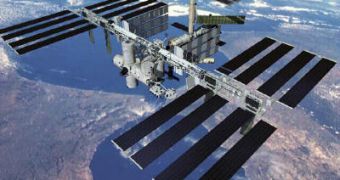Due to the fact that the Atlantis space shuttle has been grounded until January 10th next year, as a result of problems with the gauges that indicate the level of fuel in the liquid fuel external tank, NASA has taken advantage of the situation and has scheduled a spacewalk next week, in order to inspect once again the damaged rotary joint, which supports one of the solar panels used to power the International Space Station with electric energy.
Right before the arrival of the space shuttle Discovery, the rotary joint started experiencing vibration and power peaks, only four months after it had been installed. Kind of puzzled by the strange situation, NASA decided to make an inspection during the install of the space module Harmony. Upon the investigation, the crew of the Discovery found strange metal shavings inside the mechanism, suggesting some kind of mechanical failure.
Even though the ISS is not in any danger to remain without power, as this month a Russian cargo ship has been programmed to arrive, on the 8th of December a second mechanism on the same supporting beam failed. The rotary joint enabled the solar panel to be rotated 360 degrees, but in order to prevent further extensive damage, the crew locked it in place in late October.
The second mechanism that failed last week enables the solar panel to move from side to side, even when the rotary joint is locked. The simultaneous failure of the two assemblies could be the result of a micrometeorite strike, NASA engineers say. However, there is a second scenario that involves the debris resulted from the metal grinding of the rotary joint, shorting out part of the electrical components which control the two.
Nevertheless, the failure of the two sub-assemblies should not interfere in any way with the plans to fly the Columbus space module to the ISS, or with the arrival of the cargo ship. Spare parts will be flown with the Atlantis space shuttle, as soon as the problems with the liquid fuel external tank sensors are clarified.

 14 DAY TRIAL //
14 DAY TRIAL //